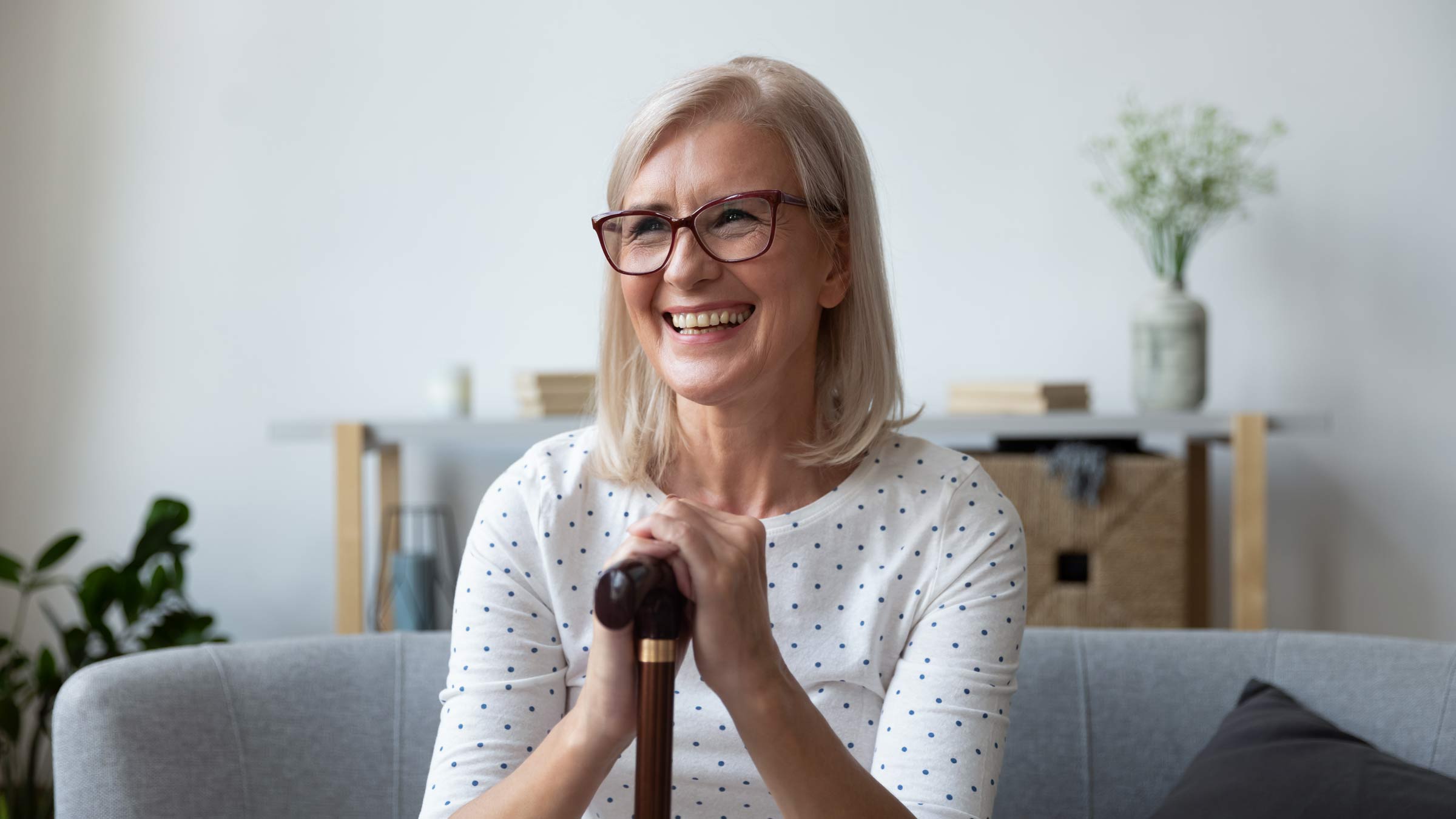
Daily life can become a struggle for people with an increased risk of falling, whether that’s because of a disorder, prior injury, disability or other health issue.
And some people at risk of falling are so worried about breaking bones that they avoid activity in general, missing out on experiences and making their muscles even weaker — which continues to increase their risk of falling and injury.
If this sounds like any of your loved ones, you might be able to help through your gift-giving. Carmen Quatman, MD, PhD, an orthopedic surgeon-scientist at The Ohio State University Wexner Medical Center with special training in geriatric orthopedic trauma, and Jessica Wiseman, MPH, a clinical research coordinator in Orthopedics at The Ohio State University College of Medicine, have rounded up some gift ideas below with the help of partners from the central Ohio Community-centered Fall Intervention Team.
Apparel
Grip socks — not slippers
Cozy slippers are a popular holiday gift, but for some people, slippers increase the risk of falling. Slippers aren’t typically snug-fitting enough for walking as safely as possible. Socks with grip soles, though, are a great alternative that keep feet warm indoors and prevent slipping.
Shoes that are easy to put on
Shoes that are easy to slide on and off but still fit snugly are convenient and incentivize putting on shoes when it can help prevent falls. Kizik is one brand of slip-ons that function like sneakers but can be stepped into like slippers.
Adaptive clothing
Sensory-friendly and adaptive clothing lines have become more common in recent years. You don’t have to sacrifice style to have clothing with magnetic closures instead of buttons, shirts that open at the back, wrap-around dresses or skirts, pants that open at the sides, etc. Consider Velcro belts as well as vests, muumuu dresses, and capes (instead of coats) that can accommodate limited shoulder mobility.
Travel accessories
Travel pill boxes
It’s important to take some of your medications with you in a carry-on if you’re on a long flight or if there’s a danger that checked baggage could be lost en route. But carrying a large pill box or whole bottles of medication can be cumbersome. A smaller, travel pill box is perfect for taking on a plane.
Lumbar support
A lumbar support pillow can prevent pain and stiffness on long drives or flights.
Vehicle support handle
A grab bar handle designed to fit into a car door latch, sometimes labeled an “auto cane” or vehicle “handybar,” can help those with some mobility impairment get in and out of the car easily.
Water bottle
Staying hydrated is important for everyone. You can make that easier with a stylish water bottle that can clip to a bag, is easy to open, won’t easily spill, can fit into a bookbag sleeve or purse, is light enough to hold easily when full, and can fit into a standard-sized cupholder.
Power bank
A portable power bank for charging phones and other devices can keep your loved one from having to search for an outlet in unfamiliar environments.
Cooking and eating
Fire extinguishing gadgets
If a cooking fire were to happen, does your loved one have tools they can easily use to put out the fire? Fire extinguishers come in many forms these days, including small sticks, spray cans and blankets, in addition to the traditional pull-pin sprayer. Keep in mind, though, that emergency experts recommend that people with limited mobility prioritize getting to safety and calling 911 over fire containment.
Weighted utensils and writing instruments
Some people who are at risk of falling also experience tremors and have trouble pens or cutlery. Weighted tools can help stabilize shaky hands, and bendable, easy-grip flatware with built-up grips can increase comfort and reduce the likelihood of dropping cutlery.
Home items
Motion lights
Lights that illuminate spaces when they sense motion prevent people from stumbling through the dark to reach a light switch. Lights that plug in are ideal so that batteries don’t have to be changed, but battery-powered lights or those with battery backups will still work in a power outage.
Another option is motion-sensing light bulbs, which can be installed into a regular light fixture. However, they do turn off after a certain amount of time if they haven’t sensed motion.
Telescopic light bulb changer
A light bulb changer kit that uses a long pole can keep people from climbing ladders (or worse, standing on something less stable to reach lights).
Dusting extenders and reaching tools
It’s especially helpful to have one reach tool per room in an accessible spot.
Smart home devices
Devices such as Amazon Echo or Google Home speakers help people control lights, make phone calls, keep track of their schedule and medications, and more, with just their voice — without having to search for the phone, remote or other gadget.
Smoke detectors and other tools that have longer battery life
Reducing the frequency that someone needs to change batteries in everyday tools or monitors can be helpful. Smoke detectors with 10-year batteries especially can keep people from getting on ladders to switch out batteries.
Services
Professional organizing
Paring down belongings or finding appropriate places for all of them can be key to creating a living space that prevents falls. Professional organizers are ready to help and make the process quicker and easier. There are also services that can help people sort through sentimental items if they’ve lost a loved one, as well as professionals who help prepare homes to sell when it’s time to transition to a safer living environment.
Grocery delivery
You can gift a membership to a service like Instacart+, Walmart+ or Shipt to make grocery delivery a snap.
Classes for enjoyment
If they’ve talked about always wanting to get into a certain craft or hobby, give them that extra nudge to seize the opportunity with a gift card or homemade “certificate” for supplies or classes.
Ride service gift cards
Gift cards for Uber, Lyft or similar services can empower adults to get where they want to go without waiting for help from other family or friends. Be sure to consider their tech literacy, though, and help them understand how to use the gift card by accessing mobile apps, if needed.
Handy services
Some handy service businesses offer gift certificates for various home maintenance needs. This can give a loved one that extra push to let someone else do some work around the house.
Personal coupons for help
Offering your own help might be especially appreciated because it also means you and your loved one get to spend time together. You could help with…
- home organization
- seasonal tasks (changing decorations, or weather-related maintenance)
- tasks that require standing on a ladder (changing batteries in smoke detectors or changing light bulbs)
- enrolling in prescription delivery
- connecting to community services, such as community paramedicine (available in some areas through fire departments and other municipal agencies), a “village” in the Village to Village Network (Central Ohio Network of Villages available here), assistive technology services or a local senior center

When you give to The Ohio State University Wexner Medical Center, you’re helping improve lives
We’re committed to making advancements in research, education and patient care that will have an impact throughout Ohio and the world.
Ways to Give




